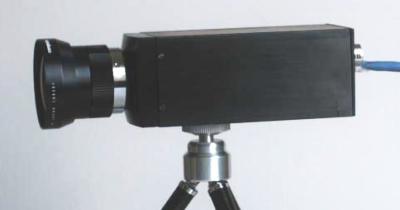Article: How to use free software in FPGA embedded designs
May 6, 2003 — by LinuxDevices Staff — from the LinuxDevices Archive — 11 viewsForeword
Last December, LinuxDevices.com published an article that I wrote about a high-res network camera I designed that is based on a reconfigurable FPGA and is running Linux. About a third of the inquiries I received subsequent to that article were specifically related to the “open” (in the sense of… open source software / free software) nature of the design, leading me to conclude that there is a significant — and mostly untapped — market for devices combining Linux and a reconfigurable FPGA supported by open software and tools.

Model 313 Reconfigurable Network Camera
The camera combines the flexibility of embedded Linux with the high performance of the reconfigurable FPGA from Xilinx — the largest manufacturer of what are probably today's most advanced programmable devices. Xilinx aggressively promotes the use of its FPGAs for an ever-expanding range of embedded applications, and even claims to have obsoleted the use of separate processor chips in many areas by replacing them with soft cores.
The pairing up of reconfigurable FPGAs with Linux naturally raises questions as to availability of “open” development tools. Many of us are accustomed to using gcc to compile software for a variety of processors; but are there any “open” tools for use on reconfigurable FPGAs?
So when I was approached by Tom Durkin, the managing editor of the Xilinx Xcell Journal, to write an article about my Xilinx/Linux-based camera, I decided to shift the focus from details of the implementation of the camera itself to the more general issues of “open” development tools and software as applied to FPGA design.
In my opinion, cooperation with the free software development community is very important for the FPGA manufacturers. It will both help them to increase their customer/application base, and it will also provide them with quality software, similar to how most processor manufacturers now make either direct or indirect use of GNU tools.
Xilinx recently introduced a new family of programmable devices, with up to 5 million gates in a single FPGA — the Spartan 3 family. Unfortunately, support for this family using their freely downloadable tools is currently limited to devices having a maximum of 50K gates. I hope Xilinx will expand that support to span the full 5 million gate range of the Spartan 3 family — then, I'll use those exciting new FPGAs in Elphel designs!
Download Andrey Filippov's latest article here . . .
(207KB PDF file)
“How to use Free Software in FPGA Embedded Designs” is copyright © 2003, Xilinx, Inc. All Rights Reserved. Reproduced by LinuxDevices.com with permission. You can access the Xilinx “Xcell Journal” online, here.
This article was originally published on LinuxDevices.com and has been donated to the open source community by QuinStreet Inc. Please visit LinuxToday.com for up-to-date news and articles about Linux and open source.